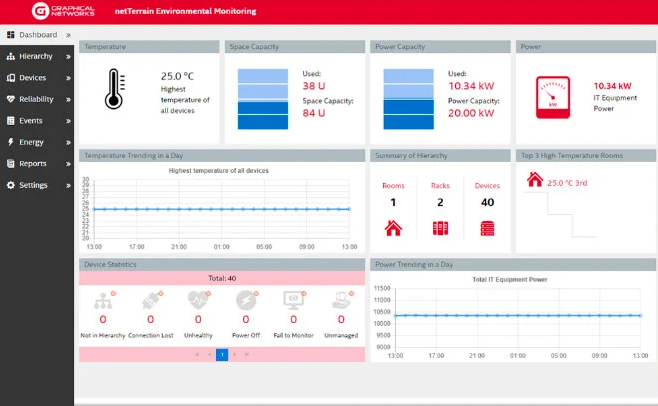
It’s no secret: the demand for more and more data storage is increasing at record speeds today! More storage and higher costs go hand in hand: look at some of the recent headlines in data center news and it’s apparent that data center capacity is both expensive and that the need for it is constantly growing alongside tech’s growth.
An industry research firm recently announced that the demand for data center capacity is set to expand at a rate of 10.1% in the next few years due to how much data is being stored due to the rise of complex automation and customer analytics. Sounds about right: Salesforce, as an example, has been heavily investing in additional data center capacity for the years 2021-22.
In this website’s blog, we’ve often discussed data center capacity — but we’ve yet to do a deeper dive into what, exactly, it is. This three-part blog series will discuss what data center capacity is, how to measure it with DCIM, and how to plan for capacity.
What Data Center Capacity Is
In a nutshell, “Data Center Capacity” means the available resources that a data center has — both for current and projected IT demands. Available resources that can comprise data center capacity include:
- Power: this refers to how much power is available
- Space: this refers to how much space is available
- Equipment: this refers to how much equipment, from servers to racks, is available
- Cabling: this refers to how much cabling is available
Why Data Center Capacity Matters
At the very moment that you think you’ve finally captured a portrait of your data center…it changes again. As we said above, data centers are constantly evolving: planning for the resources they require, now and in the future, may not be simple…but it’s essential. Due to the massive increase in data over the past few years, data centers now account for a staggering 1 to 2% of global energy consumption, according to some academic researchers.
Reducing power, space, and equipment consumption by maximizing what’s currently in a data center is necessary to keep costs down. Data center managers need to ensure the data center stays right-sized, or, in other words, not any larger or smaller than it needs to be. To determine this, they need insights around space, power, equipment, connections, and more. Research from Uptime Institute, for example, has found that one in three data center servers is a zombie — servers that draw power but don’t perform any functions. Data center managers need insights to find zombie servers and either put them back to use or decommission them.
To sum up, data center capacity refers to the resources a data center has available — from servers to power to physical space. Data center capacity matters because it impacts costs, uptime, manpower, and more.
What’s coming up in the next blog in this 3-part series? We’ll dive into how software like DCIM helps data center managers plan for capacity and how, exactly, you can measure capacity using DCIM. As you will learn, DCIM is an important part of the puzzle when it comes to keeping capacity right-sized. Need to know how much power is being used in a specific data center room?
 Example: Power Dashboard in netTerrain DCIM Software
Example: Power Dashboard in netTerrain DCIM Software
With our software netTerrain DCIM, for example, you can simply pull up the dashboard and get a detailed report. Need to visualize a floorplan before you purchase new equipment? netTerrain gives you detailed floorplans that depict your data center in real time.
Stay tuned!